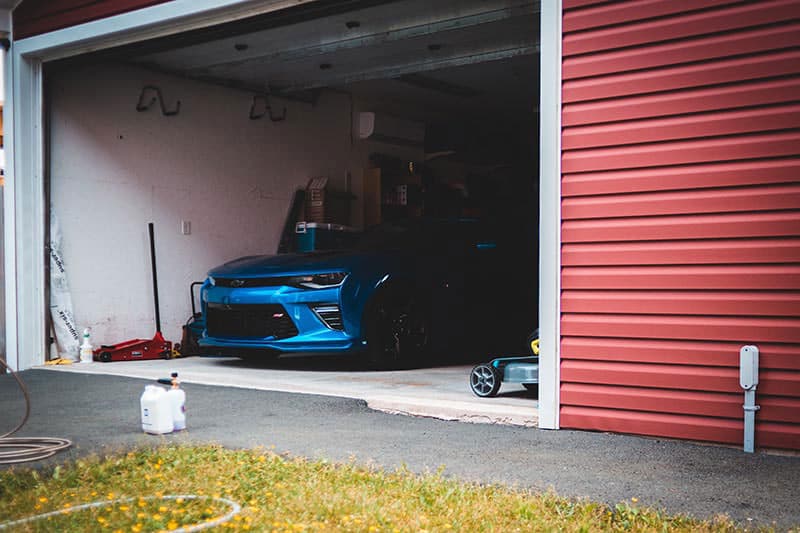Garages represent great assets for homeowners. Highly versatile, a garage isn’t just for storing our car but also may serve as additional storage space, a workshop, or an escape from family life in a “Man Cave.” If you have a garage attached to your house or on your property, you will undoubtedly have a special use for it.
Due to their more open-plan nature, garages are more prone to flooding than other parts of your household. In today’s article, we will explore how your garage might flood and how you can prevent it from happening.
What Can Cause Garage Flooding
The leading cause of garage flooding is apparent – the large, unsealed door that provides access for your vehicles is not the most weatherproof entrance to your home. This, however, is not the only way that water can get in.
Water can find its way anytime you open any of your garage’s entrances. It can also seep in from outside if you have any flower beds, taps, or pipes that run alongside or through it. Cracks in the floor and walls of your garage will give water access to whatever you store inside your garage, as will any damage to your garage roof. Our Davis County clean-up specialists see a lot of garage issues caused by heavy rainstorms and melting snow and ice.
Ways to Prevent Flooding
So, let’s take a look at what you can do to prevent floods from damaging your garage. Given the causes mentioned above, you should take some of the following precautions:
1. Check your garage for cracks
Regularly inspect the foundation and walls of your garage for cracks. If you find any, repair them as soon as possible, as they can quickly worsen if left alone, especially once the water begins seeping through them. Fortunately, this is easy work. Fill the crack with waterproof paint or a vinyl concrete patch to stop it from being a threat if it is a small one. You can seek professional help from a Utah water damage restoration company for more significant cracks or gaps in the walls.
2. Maintain the seals around the garage door
As the main entrance to the garage, the garage door will have the most use and wear and tear. Opening and closing the door frequently wears the rubber seals around the frame and damages the hinges, springs, and motors. Over time, this damage will prevent the door from closing properly, making it easy for water to seep in.
When you check for cracks, examine the rubber seals and hinges on your door. If you find any that have worn away, rusted, or no longer sit flush, replace or tighten them, ensuring a tight seal. Only when the damage is too severe should you think about getting a replacement.
3. Keep drainage clear
Your garage should have a drainage ditch that allows any water to flow safely outside. This can be as little as a small channel carved on one side to as large as a grated gutter. Regardless of what you have, make sure the garage floor is sloped toward it to allow the water to flow easily and keep it clear of dirt and debris, so the route is unobstructed.
4. Maintain the garden around your garage
Most garages are located near or in a property’s garden, which raises external threats that can lead to flooding. Flower beds around your garage’s walls will make the building look nicer, but roots and wet soil can cause erosion to the garage’s foundation. Creeper vines will create gaps in the walls and roof if allowed to grow along with them, and water retention in the ground can seep up under the walls.
The best practice for gardens is to ensure that the ground slopes away from your garage, allowing the water to drain without pooling around it. Keep plants away from the walls with trellises and stakes, and regularly clear any plant life from the roof when it grows high enough.
5. Install shelving and roof storage inside your garage
Doing this serves two purposes: It keeps the floor of your garage clear and prevents water damage from occurring to your possessions.
If you don’t use your garage for your car but store your belongings there instead, you don’t want them damaged by water. Boxes stacked around the walls of your garage will prevent water from reaching potential exits while also trapping excess water, leading to damage.
By keeping the ground clear, water will have the freedom it needs to flow freely without building up. Keeping all your items off the ground and on shelving units will also prevent them from becoming damaged if a major flood should occur.
6. Have sandbags or flood barriers on hand
If your area is prone to heavy storms or snowfall, then water will be inevitable. Luckily, there are ways you can physically stop it from entering when you know bad weather is coming.
Keep a stack of sandbags on hand that you can lay across the garage door to prevent storms or floodwaters from getting in. Another great option, if you can afford them, another great option is installable flood barriers. If not, secure treated boards along the door base as an alternative. Either way, once you know that a storm is coming, you have time to lay protective measures down.
When it comes to keeping your garage dry, proper maintenance is critical. So long as you regularly inspect your garage for damage and make minor repairs when you find them, you can keep your garage from any unwanted water getting in.

